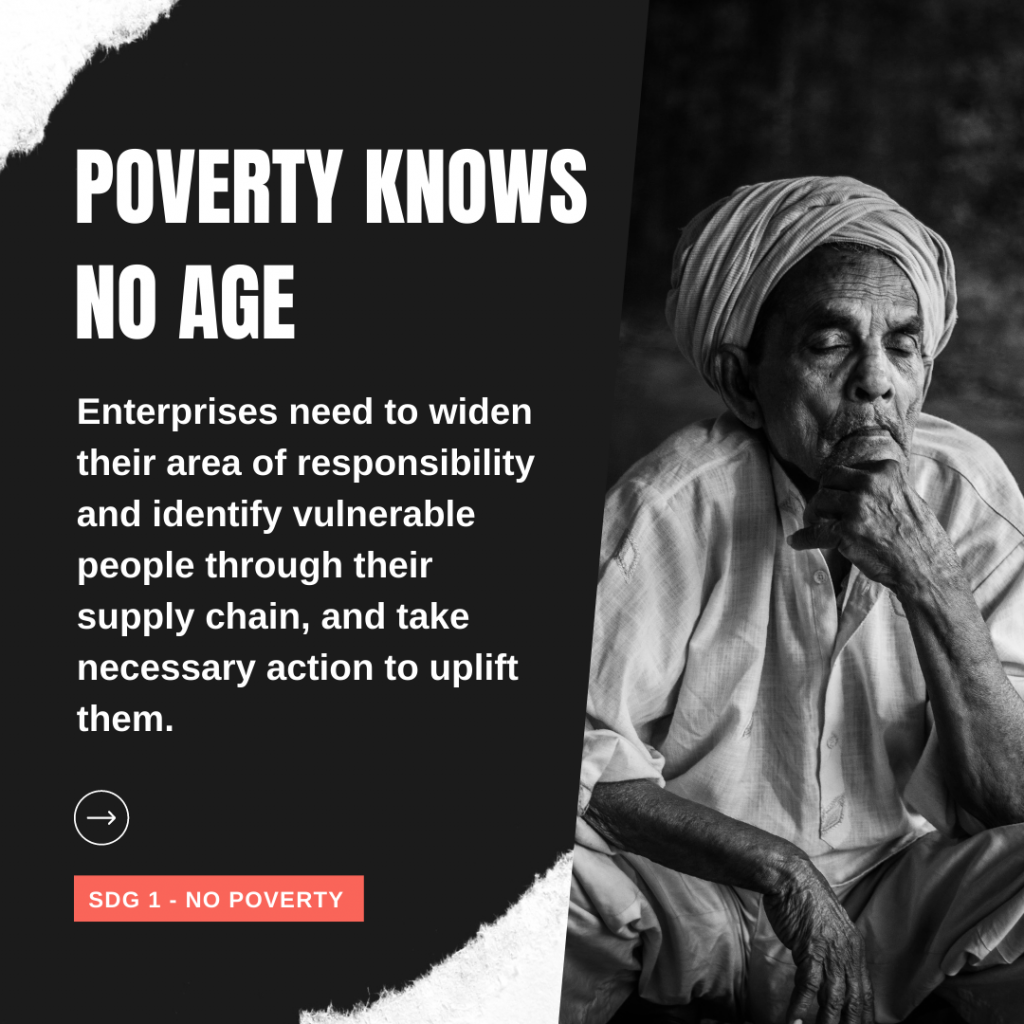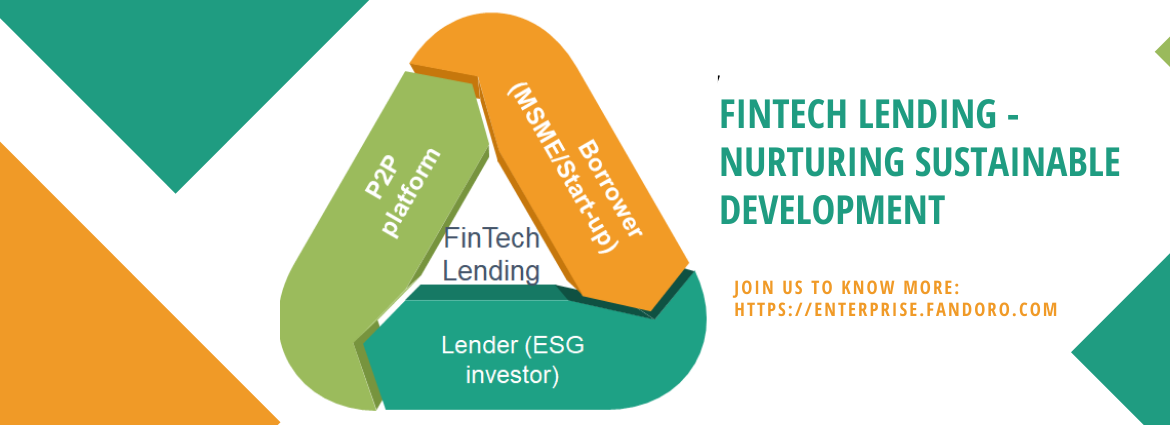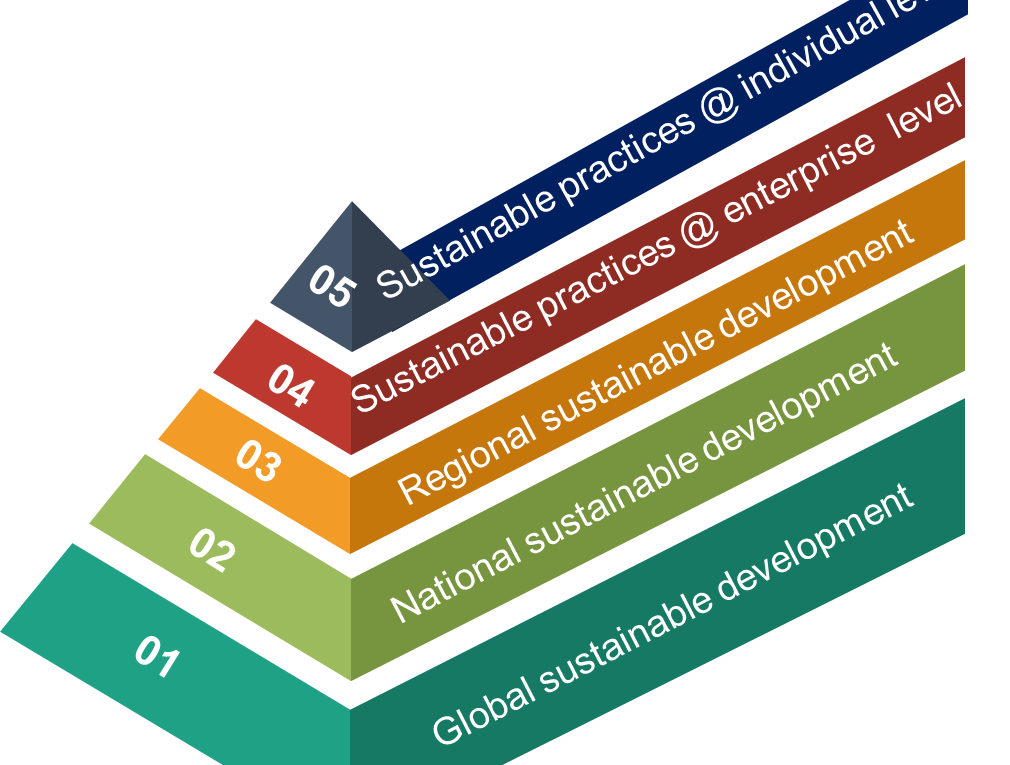Impact of SDG 1
The ease and comfort we live in today are the fruits of modern technology and development, but not everyone on this planet is privileged enough to live this kind of life. A major portion of the population (more than 700 million people) still lives in inhabitable conditions with minimum access to basic human necessities like food, water and shelter. People living in extreme poverty survive on less than $1.90 a day. Poverty is a serious impediment to development, as it leads to many other issues like:
- Hunger
- Lack of drinking water
- Homelessness
- Poor physical and mental health
- lack of education
- Insanitary conditions
- Inequality
- Vulnerability to disasters
All these issues lead to conflicts and social instability, which may further lead to political upheaval and economic crisis. Despite economic growth, poverty predicament still exists and needs to be resolved urgently, in order to attain socio-economic sustainability.
SDG1
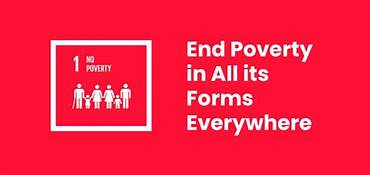
Considering the hazards of poverty, the United Nations had drafted SDG 1 –“No Poverty” in the year 2015 as one of its 17 Sustainable Development Goals of agenda 2030,aiming to End poverty in all its forms everywhere. Since its launch, nations across the globe have been working progressively towards achieving the targets of the goal, but the COVID – 19 Pandemic has emerged as a major setback in the path of poverty eradication, reversing the progress made through decades and making it impossible to meet the targets of the Goal. According to UN, an additional 120 million people were pushed back into extreme poverty in 2020, following the COVID lockdowns and The Global Poverty Rate is projected to be 7% in 2030, which means that the target cannot be achieved. There is a pressing need to address to this crisis, for which Governments, private sector and Civil Society Organizations need to come together and work closely.
SDG 1 Targets
- Target 1.1 : By 2030, eradicate extreme poverty for all people everywhere, currently measured as people living on less than USD1.25 a day.
- Target 1.2 :By 2030, reduce at least by half the proportion of men, women and children of all ages living in poverty in all its dimensions according to national definitions.
- Target 1.3 :Implement nationally appropriate social protection systems and measures for all, including floors, and by 2030 achieve substantial coverage of the poor and the vulnerable.
- Target 1.4 :By 2030, ensure that all men and women, in particular the poor and the vulnerable, have equal rights to economic resources, as well as access to basic services, ownership and control over land and other forms of property, inheritance, natural resources, appropriate new technology and financial services, including microfinance.
- Target 1.5 :By 2030, build the resilience of the poor and those in vulnerable situations and reduce their exposure and vulnerability to climate- related extreme events and other economic, social and environmental shocks and disasters.
- Target 1.A :Ensure significant mobilization of resources from a variety of sources, including through enhanced development cooperation, in order to provide adequate and predictable means for developing countries, in particular least developed countries, to implement programmes and policies to end poverty in all its dimensions.
- Target 1.B :Create sound policy frameworks at the national, regional and international levels, based on pro-poor and gender-sensitive development strategies, to support accelerated investment in poverty eradication actions.
Role of business
While Government has been orchestrating many schemes to provide employment, housing and social security to poor people, many poor people are still not covered under these schemes.
Business community has a major role to play towards Poverty eradication, as business provides employment, which is the biggest weapon against poverty. Small and medium enterprises and Labor-intensive industries, provide employment to both skilled and unskilled people, and can therefore contribute more towards SDG 1. In addition to providing employment, enterprises must ensure decent wages and healthy work environment to help people overcome poverty.
Industries which can contribute more towards SDG1
- Agriculture
- Food processing
- Mining
- Construction
- Packaging units for various industries
These industries can provide low-income employment to unskilled people too. Respecting human rights and labor rights is the basic responsibility of any business, and is also important for establishing good reputation, but is not enough to fight poverty; enterprises need to think and act beyond their basic responsibilities.
There are two approaches that could be followed by enterprises in order to tackle the poverty issue:

An enterprise may choose any one or both the approaches to contribute towards SDG 1, suitable to their business model. An enterprise may be providing decent wages to poor people it employs, but there is a great possibility of poor people being exploited at various levels of the supply chain. Therefore, enterprises need to widen their area of responsibility and identify vulnerable people through their supply chain, and take necessary action to uplift them.
How do businesses get benefitted by unlocking potential opportunities around SDG1?
SDG1 is one of the least preferred goals when it comes to prioritizing SDGs for business engagement, as the potential benefits of aligning business strategies with SDG1 are still unforeseen. SDG1 can have positive impact on business in many ways:
- Market expansion
If millions of people living under poverty are lifted up to better standards of living and given decent wages, they would widen customer base for many companies, which would expand market for them, adding to their demand-supply network.
- Scope of innovation
People uplifted from poverty could be seen as potential customers for certain products, which could be developed considering their specific needs. Innovations in this regard would create employment opportunities for poor people through production of affordable and quality products for them.
Key areas for innovation:
- Health
- Nutrition
- Sanitization
- Construction of affordable houses
- Microfinance assistance
Poor people have easy access to microfinance services. They can be trained to develop skills for establishing micro enterprises supported by microfinance.
- Government support
Government provides support to enterprises that engage in poverty alleviation, through schemes and policies which benefit them through tax reduction and ease of business.
Business opportunities in SDG1
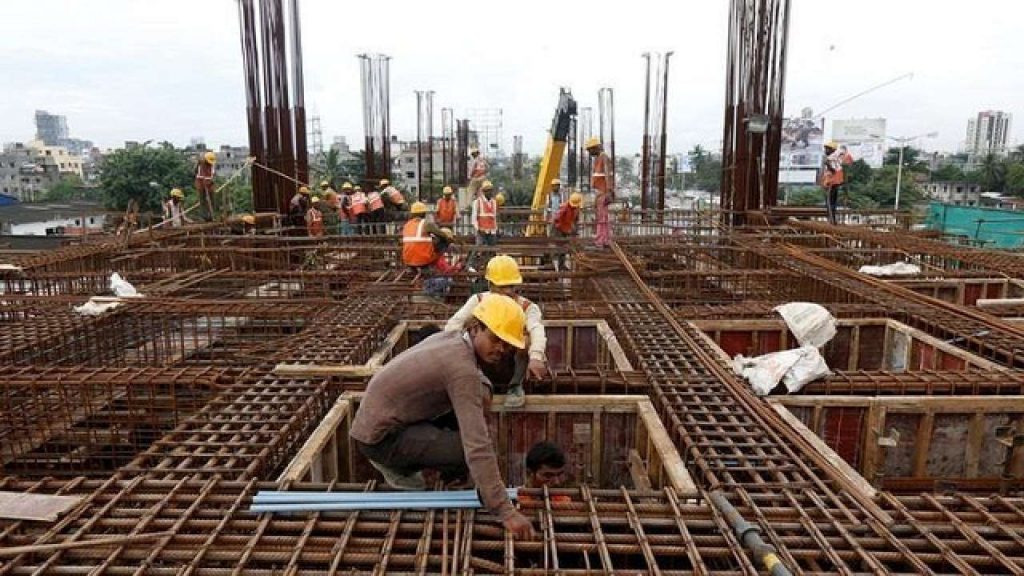
The business of recycling
As discussed earlier, business involving unskilled labor can help alleviate poverty by providing employment to a large number of people. One of the best ways of engaging with poor or unskilled people is by involving them in the process of recycling. In today’s world of responsible business, companies are greatly concerned about waste management and recycling. Many entrepreneurs have come up with innovative ideas for recycling and reusing waste material for producing new products, but find it challenging to source and process waste. Unskilled people can be employed to procure and process recyclable waste from various sources.
- Poor people living near industrial areas could be employed for obtaining waste from industries, to be used as raw material for other products. This waste material could be processed and sold as raw materials for other businesses.
- People living in coastal areas could be employed for collecting plastic waste from oceans and processing them to provide raw material for construction and other industries.
- Agricultural waste is also in demand for conscious products.
- Packaging waste can also be processed to produce various products for construction industry.
- Waste from cloth manufacturing units could be reused for ecofriendly packaging.
Setting up units for procuring and processing waste materials could turn out to be a great Business opportunity.
E-commerce
During the pandemic, when most business activities were shut down due to lockdowns, Ecommerce continued its operations and served people with basic necessities, all around the world, displaying the sustainable nature of its business model. India’s ecommerce industry showed tremendous growth during the pandemic and is expected to rise further to reach US$99billion by 2024. It also emerged as a large-scale employment provider and has the potential to create 1 million jobs by 2023.
MSMEs provide employment opportunities to a large portion of population, especially in rural areas. By using e commerce platform, MSMEs are seeking advantages like easy access to market and reduced distribution cost. According to reports, MSMEs that use ecommerce have recorded 60 to 80 percent reduction in marketing and distribution costs. E commerce is encouraging people to set up small businesses through skill development supported by government policies.
Delivery services
Delivery is an important aspect of e commerce. During the Pandemic, many people were employed under delivery services for supporting various e-commerce companies and also for delivering necessities across cities.. With the growth of e commerce, there has been a rising demand of delivery services. A delivery service company can be set up with little investment and by providing little training to unemployed people. Such companies are recorded to have made huge profits during the lockdowns are continuing to do so, while providing employment to a large number of people.
Service and repair
In urban areas, companies like “Urban Company” are providing training and employment to a large number of people in the area of services like cleaning and repair jobs, which usually fall under unorganized sector. The business model of such companies, helps in providing decent employment to unorganized workers and supports skill development, while generating huge profits.
Civil Society Organizations (CSOs)
There are many civil society organizations worldwide working towards SDG-1. Such organizations understand the needs of poor people and are well aware of the ways which would uplift them out of poverty. Collaborating with CSOs would provide practical and effective solutions to enterprises for engaging with SDG-1. Combined efforts of the Government, Business community and Civil Society would surely make a difference.

